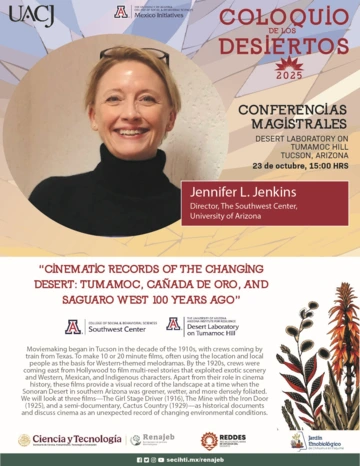Coloquio de los Desiertos 2025

When
Where
Free Event
Thursday, October 23, 2025 - 3 PM
Tumamoc Hill - 1675 W Anklam Rd, Tucson
We are pleased to invite you to the 2025 Coloquios del Desierto, a collaborative effort by scholars from diverse disciplines and institutions to create a space for reflection and exchange on desert studies. The colloquium has fostered academic publications, interdisciplinary projects, and the formation of the Multidisciplinary Network for Desert Studies.

Join us as we follow Dr. Jennifer Jenkins through the fascinating cinematic history of the region. Moviemaking began in Tucson in the decade of the 1910s, with crews coming by train from Texas. To make 10 or 20 minute films, often using the location and local people as the basis for Western-themed melodramas. By the 1920s, crews were coming east from Hollywood to film multi-reel stories that exploited exotic scenery and Western, Mexican, and Indigenous characters. Apart from their role in cinema history, these films provide a visual record of the landscape at a time when the Sonoran Desert in southern Arizona was greener, wetter, and more densely foliated. Dr. Jenkins will focus on three films: The Girl Stage Driver (1916), The Mine with the Iron Door (1925), and the semi-documentary Cactus Country (1929), examining them as historical documents and discussing cinema as an unexpected record of changing environmental conditions.

